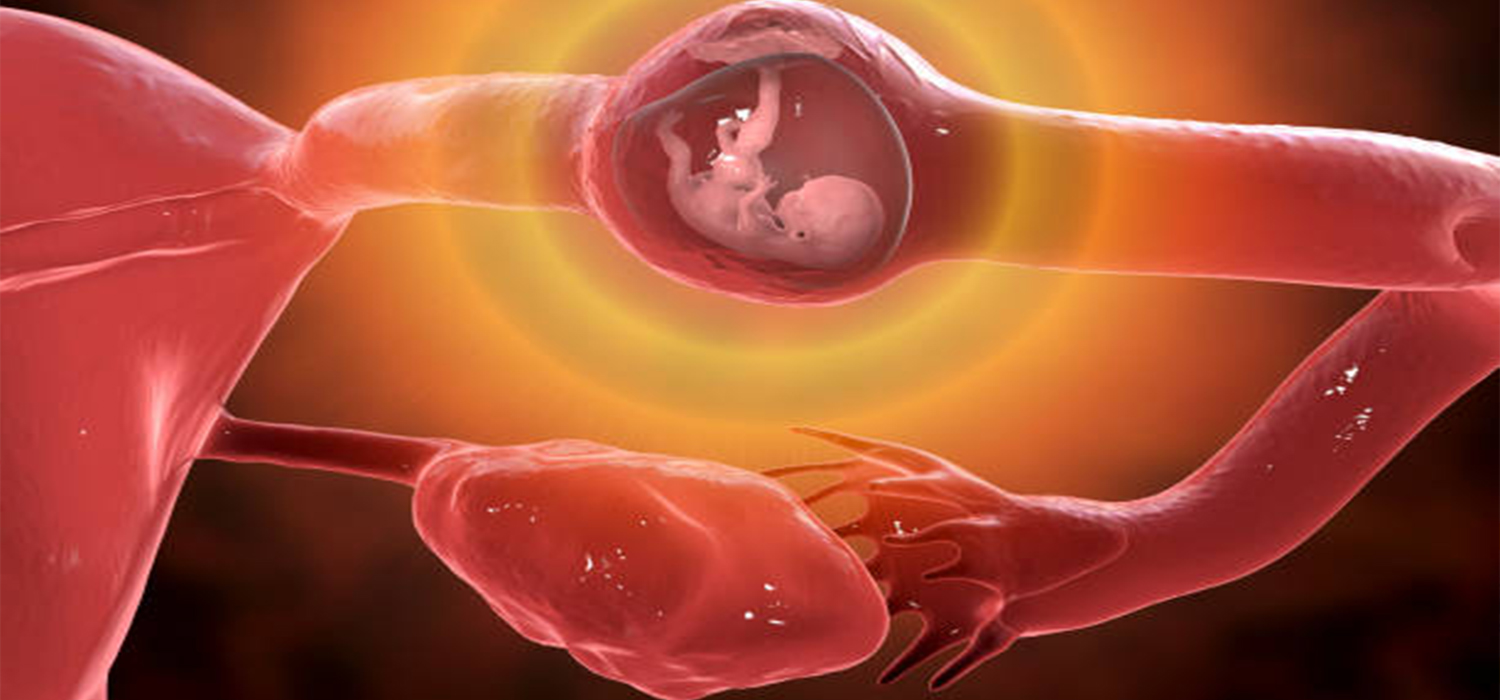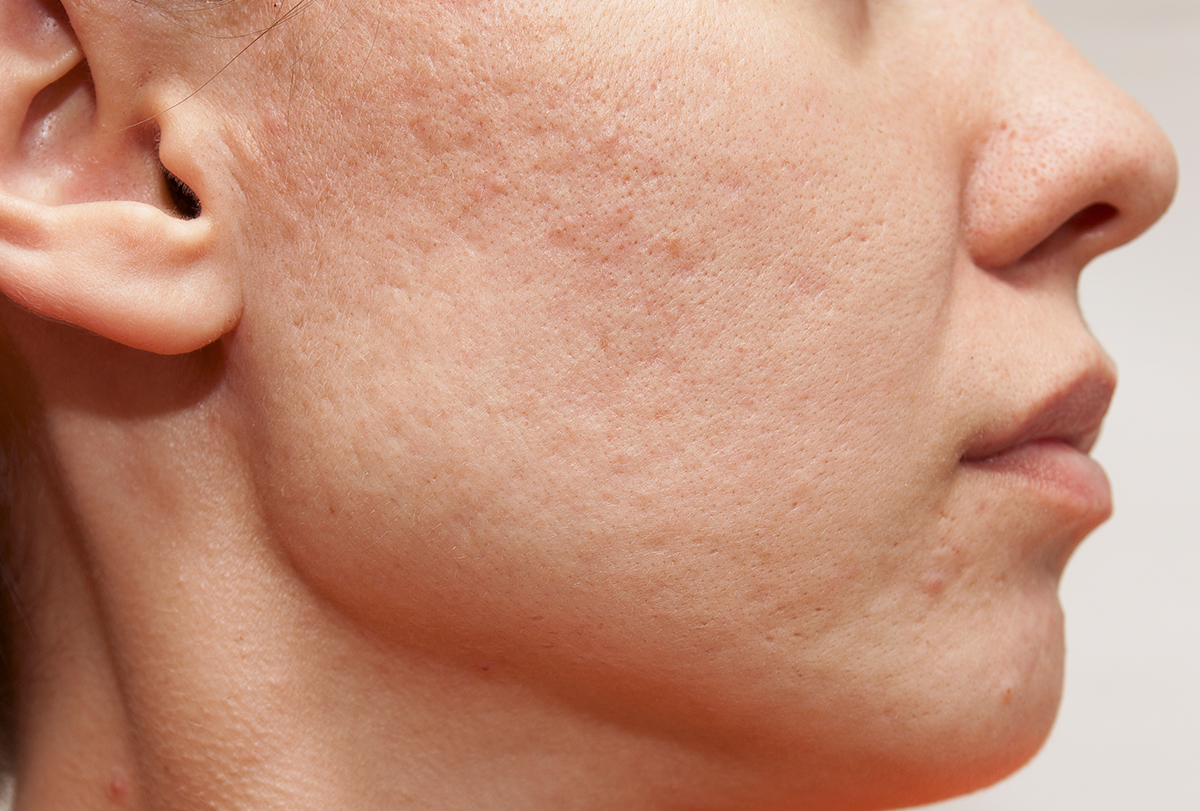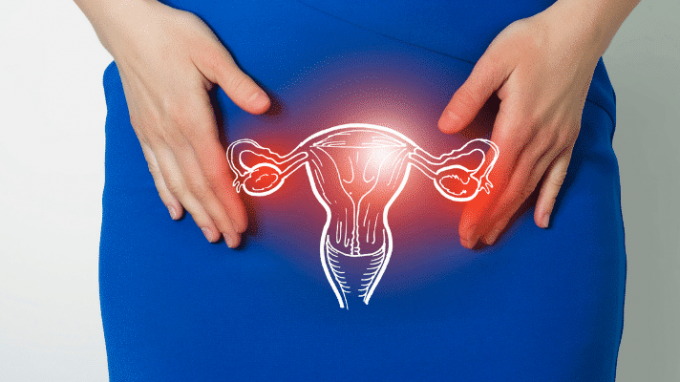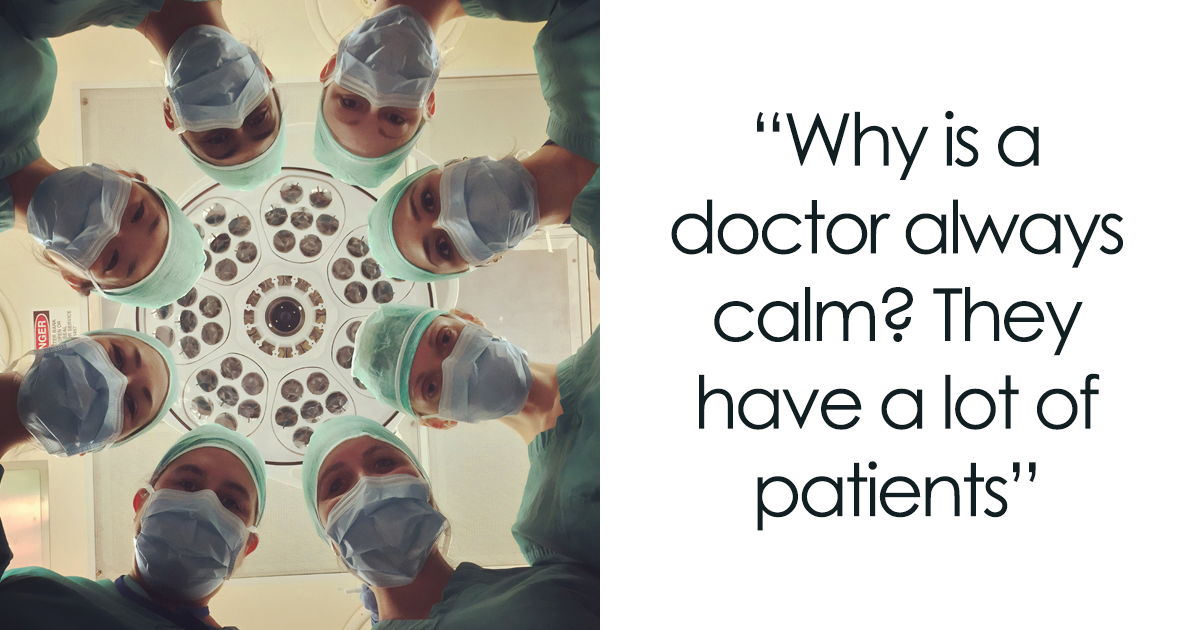Pelvic Inflammation or PID is the infection and swelling of the female reproductive organs; in other words, Pelvic inflammatory disease is an infection of a woman’s reproductive organs. It is a complication often caused by some STDs, like chlamydia and gonorrhea.
Thank you for reading this post, don't forget to subscribe!Other infections that are not sexually transmitted can also cause PID. It can involve the vagina, uterus, fallopian tubes, and ovaries. The risk of pelvic inflammatory disease (PID) increases if one has STDs/STIs (sexually transmitted diseases/infection), such as gonorrhea and chlamydia, or a history of STD.
Untreated sexually transmitted diseases (STDs) can cause pelvic inflammatory disease (PID). In about 10% of cases, pelvic inflammatory disease (PID) may occur without having an STD.
What causes pelvic inflammatory disease?
The majority of Pelvic inflammatory diseases are sexually transmitted. Nonsexual Pelvic inflammatory diseases may occur in…
- Septic abortions
- During the medical termination of pregnancy if there is improper sterilization of tools
- Procedures like dilation and curettage
- Rupture of an abscess inside the abdomen and it has spread to the uterine tubes
The most common causative microorganisms of PID are sexually transmitted. They include
- Gonorrhea (most common)
- Chlamydia (most common)
- Trichomonas
- Mycoplasma
Several other bacteria can also cause PID, such as
- Staphylococcus
- Klebsiella
- E.coli
- Fusobacteria
- Clostridia
- Actinomyces
- Bacteroides
Risk factors of pelvic inflammatory disease
Some factors that can increase the risk of pelvic inflammatory disease are
- Having unprotected sexual intercourse
- Being a sexually active woman younger than 25 years old
- Having multiple sexual partners
- Being in a sexual relationship with a person who has multiple sexual partners
- Frequent vaginal douching creates an imbalance of good versus harmful bacteria in the vagina
- Using a tampon, intrauterine device (IUD), or douche within the 3- to the 6-week-long period after an abortion or childbirth when the mouth of the uterus remains open and is susceptible to infection
- Using a long-term birth control device, such as an IUD
- Having a history of sexually transmitted diseases or pelvic inflammatory disease.
Symptoms of pelvic inflammation
The signs and symptoms of the pelvic inflammatory disease vary with each individual. Some may have mild or no signs and symptoms while others may have severe symptoms. Some common signs and symptoms include
- Lower abdominal pain that may be mild or severe
- Fever with or without chills
- Heavy, foul-smelling vaginal discharge
- Abnormal uterine bleeding, especially between menstrual cycles and during or after intercourse
- Pain during urination and increased frequency of urination
- Painful sexual intercourse.
Complications if not treated
If diagnosed and treated early, the complications of PID can be prevented. Some of the complications of PID are
- Formation of scar tissue both outside and inside the fallopian tubes that can lead to tubal blockage;
- Infertility (inability to get pregnant);
- Chronic pelvic pain: Long-lasting pelvic pain is the most common complication. (about 20% of people develop chronic pelvic pain).

- Ectopic pregnancy: Scarring can prevent a fertilized egg from moving into your uterus. This can cause it to implant inside your fallopian tubes instead. The rate of ectopic pregnancy in people with PID is much higher than in people without PID.
- Infertility: Some patients with PID lose the ability to get pregnant because scar tissue blocks their fallopian tubes and prevents them from releasing an egg.
- Tubo-ovarian abscess (TOA): TOA is a pocket of infection in the pelvis that can make patient extremely sick.
The following situations require immediate medical attention
- Severe abdominal pain
- Nausea and vomiting
- High-grade fever, above 101° F (38.3° C)
- Worsening of odor and quantity of vaginal discharge
- Profuse vaginal bleeding.
Diagnosis
There isn’t one specific test for PID. Usually, a healthcare provider can diagnose PID through:
- Asking about medical history, including patient’s general health, sexual activity and symptoms.
- A pelvic exam to examine the reproductive organs and feel for tenderness or abscesses (collections of pus).
- A vaginal culture to test patient’s vaginal discharge for certain bacteria.
What other tests need to diagnose pelvic inflammation?
- Blood tests.
- Urine test to rule out a urinary tract infection, which causes similar pelvic pain.
- Ultrasound to get clearer images of your reproductive system.
- Testing for STIs.
In some cases, doctor may recommend:
- Endometrial biopsy: remove a small tissue sample from patient’s uterine lining and tests it for diseases.
- Laparoscopy: A doctor makes small incisions in patient’s pelvis, then inserts a lighted instrument to look more closely at her reproductive organs.
Allopathic treatment for pelvic inflammation
It can be treated allopathically but treatment won’t undo any damage that has already happened to patient’s reproductive system. The longer patient wait to get treated, the more likely it is that patient will have complications from PID.
While taking antibiotics, patient’s symptoms may go away before the infection is cured. Even if symptoms go away, patient should finish taking all of her medicine. Be sure to tell your spouse, so he can get tested and treated for STDs, too. It is very important that you and your spouse both finish treatment before having sex so that they don’t re-infect each other.
IM or oral therapy can be considered for women with mild-to-moderate acute PID because the clinical outcomes among women treated with these regimens are similar to those treated with IV therapy. Women who do not respond to IM or oral therapy within 72 hours should be reevaluated to confirm the diagnosis and be administered therapy IV.
Prescribe oral antibiotics for example:
Ampicillin-sulbactam plus doxycycline is effective against C. trachomatis, N. gonorrhoeae, or Ceftriaxone-500 mg IM single dose plus Doxycycline 100 mg and Metronidazole 500 mg BD orally for 14 days.
OR
Cefoxitin 2 g IM in a single dose and Probenecid 1 g orally administered concurrently in a single dose
plus Doxycycline 100 mg orally 2 times/day for 14 days with Metronidazole 500 mg orally 2 times/day for 14 days
*For persons weighing >150 kg (~300 lbs.) with documented gonococcal infection, 1 g of ceftriaxone should be administered.
Anaerobes for patients with tubo-ovarian abscess.
Azithromycin monotherapy or combined with metronidazole, for 14 days.
Using the clindamycin and gentamicin alternative parenteral regimen, patient with clinical improvement after 24–48 hours can be transitioned to clindamycin (450 mg orally 4 times/day) or doxycycline (100 mg orally 2 times/day) to complete the 14-day therapy. However, when tubo-ovarian abscess is present, clindamycin (450 mg orally 4 times/day) or metronidazole (500 mg orally 2 times/day) should be used to complete 14 days of therapy with oral doxycycline to provide more effective anaerobic coverage.
Parental regim:
Ampicillin-sulbactam 3 g IV every 6 hours PLUS Doxycycline 100 mg orally or IV every 12 hours or Clindamycin 900 mg IV every 8 hours plus Gentamicin loading dose IV or IM (2 mg/kg body weight), followed by a maintenance dose (1.5 mg/kg body weight) every 8 hours; single daily dosing (3–5 mg/kg body weight) can be substituted
Treatment should not be stopped even if patient has good feeling/feels treated or symptoms of infection goes away.
If oral antibiotic don’t work and symptoms are still present, advise your patient intravenous antibiotics (IV). Intravenous (IV) medication should be advise if patient is:
- pregnant,
- Have a severe infection and feel very sick,
- Have an abscess (collection of pus) in her fallopian tube or ovary.
Patient shouldn’t have sex until she finish treatment.
After oral and/or intravenous antibiotics, patient still have symptoms or an abscess, surgery should be advised.
No data have been published regarding use of oral cephalosporins for treating PID. As a result of the emergence of quinolone-resistant N. gonorrhoeae, regimens that include a quinolone agent are not recommended for PID treatment. However, if the patient has cephalosporin allergy, the community prevalence and individual risk for gonorrhea are low, and follow-up is likely, alternative therapy can be considered with one of the following alternative regimens: 1) levofloxacin 500 mg orally once daily in combination with metronidazole 500 mg orally 2 times/day for 14 days, 2) moxifloxacin 400 mg orally once daily for 14 days, or 3) azithromycin 500 mg IV daily for 1–2 doses, followed by 250 mg orally daily for a total azithromycin duration of 7 days or in combination with metronidazole 500 mg 3 times/day for 12–14 days. Moxifloxacin is the preferred quinolone antimicrobial for M. genitalium infections; however, the importance of providing coverage for M. genitalium is unknown. Diagnostic tests for gonorrhea should be obtained before starting therapy, and persons should be managed as follows:
- If a culture for gonorrhea is positive, treatment should be based on results of antimicrobial susceptibility testing.
- If the isolate is determined to be quinolone-resistant N. gonorrhoeae or if antimicrobial susceptibility cannot be assessed (e.g., if only NAAT testing is available), consultation with an infectious disease specialist is recommended.
Drug Allergy, Intolerance, and Adverse Reactions
The risk for penicillin cross-reactivity is highest with first-generation cephalosporins but is negligible between the majority of second-generation (e.g., cefoxitin) and all third-generation (e.g., ceftriaxone) cephalosporins.
Pregnancy
Pregnant women suspected of having PID are at high risk for maternal morbidity and preterm delivery. These women should be hospitalized and treated with IV antimicrobials in consultation with an infectious disease specialist.
HIV Infection
Differences in PID clinical manifestations among women with HIV infection and those without have not been well delineated. In early observational studies, women with HIV infection and PID were more likely to require surgical intervention. More comprehensive observational and controlled studies have demonstrated that women with HIV infection and PID have similar symptoms, compared with women without HIV, except they are more likely to have a tubo-ovarian abscess. Women with HIV responded equally well to recommended parenteral and IM or oral antibiotic regimens as women without HIV. The microbiologic findings for women with HIV and women without HIV were similar, except women with HIV had higher rates of concomitant M. hominis and streptococcal infections. These data are insufficient for determining whether women with HIV infection and PID require more aggressive management (e.g., hospitalization or IV antimicrobial regimens).
Homeopathic treatment for pelvic inflammation
The selection of Homeopathic medicine is based upon the theory of individualization and symptoms similarity by using holistic approach to remove all the sign and its underlying cause and individual susceptibility and symptoms from which the patient is suffering.
Hera are few medicines to cure pelvic inflammation.
Avoid self medication, consult a qualified Homeopathic doctor.
Sepia Officianalis
Pelvic organs relaxed. Bearing-down sensation. Leucorrhoea yellow, greenish; with much itching. Menses Too late and scanty, irregular; early and profuse; sharp clutching pains. Violent stitches upward in the vagina, from uterus to umbilicus. Prolapse of uterus and vagina. Morning sickness. Vagina painful, especially on coition.
Frequent temperatures; sweat from least motion. General lack of warmth of body. Feet cold and wet. Shivering, with thirst; worse, towards evening.
Aconit Nepalus
Menses too abundant and too protracted. Suppressed menstruation from fright; from cold feet. After-pains too painful and too protracted. Milk fever (with delirium). Puerperal peritonitis. Maniacal fury on the appearance of the menses. Stitching pains move to fundus uteri; sharp shooting pains, abdomen exceedingly sensitive. Ovaritis from suddenly checked menstrual flow. Labour-like pressing in womb (dysmenorrhoea). Uterine haemorrhage; active, much excitability; giddy, cannot sit up; fear of death. Vagina dry, hot, sensitive. Leucorrhoea, copious, tenacious, yellow.
Lilium Tigrinum
Menses early, scanty, dark, clotted, offensive; flow only when moving about. Bearing down sensation with urgent desire for stool, as though all organs would escape. Ceases when resting. Congestion of uterus, prolapse, and anteversion. Constant desire to support parts externally. Pain in ovaries and down thighs. Acrid, brown leucorrhoea; smarting in labia. Sexual instinct awakened. Bloated feeling in uterine region. Subinvolution. Pruritus pudendi.
Merc Solubilis
Menses profuse, with abdominal pains. Leucorrhoea excoriating, greenish and bloody; sensation of:max_bytes(150000):strip_icc()/GettyImages-671504352-85d29baa01604335aa0078a5457cbce2.jpg) rawness in parts. Stinging pain in ovaries. Itching and burning; worse, after urinating; better, washing with cold water. Morning sickness, with profuse salivation. Mammae painful and full of milk at menses.
rawness in parts. Stinging pain in ovaries. Itching and burning; worse, after urinating; better, washing with cold water. Morning sickness, with profuse salivation. Mammae painful and full of milk at menses.
Ashoka or Janosia Ashoka
Delayed and irregular menses; menstrual colic; amenorrhoea, pain in ovaries before flow; menorrhagia, irritable bladder; leucorrhoea.
Podophyllinum
Pain in uterus and right ovary, with shifting noises along ascending colon. Suppressed menses, with pelvic tenesmus. Prolapsed uteri, especially after parturition. Hemorrhoids, with prolapsus ani during pregnancy. Great loquacity during fever. Profuse sweat.
Phosphorus
Metritis. Chlorosis. Phlebitis. Fistulous tracks after mammary abscess. Slight haemorrhage from uterus between periods. Menses too early and scanty-not profuse, but last too long. Weeps before menses. Stitching pain in mammae. Leucorrhoea profuse, smarting, corrosive, instead of menses. Amenorrhoea, with vicarious menstruation. Suppuration of mammae, burning, watery, offensive discharge. Nymphomania. Uterine polyps.
Crocus Sativus
Threatened abortion, especially when haemorrhage is dark and stringy. Urging of blood to genitals. Menses dark, viscid, too frequent and copious, black and slimy. Uterine haemorrhage; clots with long strings; worse from least movement. Jerking pain in interior of left breast, as if drawn toward back by means of thread (Crot tig). A bounding feeling, as if something alive in right breast.
Hamamelis Virginiana
Ovarian congestion and neuralgia; feel very sore. Vicarious menstruation. Uterine haemorrhage, bearing-down pain in back. Menses dark, profuse, with soreness in abdomen. Metrorrhagia, occurring midway between menstrual periods. Intermenstrual pain. Vagina very tender. Profuse leucorrhoea. Vulva itches. Milk-leg/White leg, haemorrhoids, and sore nipples, after confinement. Metrorrhagia; passive flow. Vaginismus, ovaritis, soreness over whole abdomen. Phlegmasia alba.
Crotalus Horridus
Prolonged menses. Dysmenorrhoea; pain extends down thighs, with aching in region of heart. Uterine haemorrhage with faintness at stomach. Puerperal fever; offensive lochia. Phlegmasia alba dolens. Sensation as though uterus would drop out. Painful drawing in uterine ligaments. Cannot keep legs still.
Croton Tiglium
Catamenia too scanty, or altogether suppressed, with dyspnoea and palpitation of the heart. Pain and stitches through the breasts into the chest, and extending to the back, as soon as the child begins to nurse.
Sabina
Menses profuse, bright. Uterine pains extend into thighs. Threatened miscarriage. Sexual desire increased. Leucorrhoea after menses, corrosive, offensive. Discharge of blood between periods, with sexual excitement. Retained placenta; intense after-pains. Menorrhagia in women who aborted readily. Inflammation of ovaries and uterus after abortion. Promotes expulsion of moles from uterus. Pain from sacrum to pubis, and from below upwards shooting up the vagina. Haemorrhage; partly clotted; worse from least motion. Atony of uterus.
increased. Leucorrhoea after menses, corrosive, offensive. Discharge of blood between periods, with sexual excitement. Retained placenta; intense after-pains. Menorrhagia in women who aborted readily. Inflammation of ovaries and uterus after abortion. Promotes expulsion of moles from uterus. Pain from sacrum to pubis, and from below upwards shooting up the vagina. Haemorrhage; partly clotted; worse from least motion. Atony of uterus.
Ambra Gresia
Nymphomania, Itching of pudendum, with soreness and swelling. Menses too early. Profuse, bluish leucorrhoea. Worse at night. Discharge of blood between periods.
Bryonia Alba
Menses too early, too profuse; worse from motion, with tearing pains in legs; suppressed, with vicarious discharge or splitting headache. Stitching pains in ovaries on taking a deep inspiration; very sensitive to touch. Pain in right ovary as if torn, extending to thigh. Milk fever. Pain in breasts at menstrual period. Breasts hot and painful hard. Abscess of mammae. Frequent bleeding of nose at appearance of menses. Menstrual irregularities, with gastric symptoms. Ovaritis. Intermenstrual pain, with great abdominal and pelvic soreness.
Medorrhinum
Intense pruritus. Menses offensive, profuse, dark, clotted; stains difficult to wash out, urinates frequently at that time. Sensitive spot near os uteri. Leucorrhoea thin, acrid, excoriating, fishy odor. Sycotic warts on genitals. Ovarian pain, worse left side, or from ovary to ovary. Sterility. Metrorrhagia. Intense menstrual colic. Breasts cold, sore, and sensitive.
Kreosotum
Corrosive itching within vulva, burning and swelling of labia; violent itching between labia and thighs. During menses, difficult hearing; buzzing and roaring; eruption after. Burning and soreness in external and internal parts. Leucorrhoea, yellow, acrid; odor of green corn; worse between periods. Haemorrhage after coition. Menses too early, prolonged. Vomiting of pregnancy, with ptyalism. Menstrual flow intermits; ceases on sitting or walking; reappears on lying down. Pain worse after menses. Lochia offensive; intermits.
Pulsatilla Pratensis
Amenorrhoea. Suppressed menses from wet feet, nervous debility, or chlorosis. Tardy menses. Too late, scanty, thick, dark, clotted, changeable, intermittent. Chilliness, nausea, downward pressure, painful, flow intermits. Leucorrhoea acrid, burning, creamy. Pain in back; tired feeling. Diarrhoea during or after menses. Chilliness, even in warm room, without thirst. Chilly with pains, headache, diarrhoea, loss of appetite, nausea, worse evening.
Arsenicum Album
Menses too profuse and too soon. Burning in ovarian region. Leucorrhoea, acrid, burning, offensive, thin. Pain as from red-hot wires; worse least exertion; causes great fatigue; better in warm room. Menorrhagia. Stitching pain in pelvis extending down the thigh. High temperature. Periodicity marked with adynamia. Septic fevers. Intermittent. Paroxysms incomplete, with marked exhaustion.
Lachesis Mutus
Climacteric troubles, palpitation, flashes of heat, haemorrhages, vertex headache, fainting spells; worse, pressure of clothes. Menses too short, too feeble; pains all relieved by the flow. Left ovary very painful and swollen, indurated. Mammae inflamed, bluish. Coccyx and sacrum pain, especially on rising from sitting posture. Acts especially well at beginning and close of menstruation.
Apis Melifistida
Edema of labia; relieved by cold water. Soreness and stinging pains; ovaritis; worse in right ovary. Menses suppressed, with cerebral and head symptoms, especially in young girls. Dysmenorrhoea, with severe ovarian pains. Metrorrhagia profuse, with heavy abdomen, faintness, stinging pain. Sense of tightness. Bearing-down, as if menses were to appear. Ovarian tumors, metritis with stinging pains. Great tenderness over abdomen and uterine region. Severe temperature. Insomnia.
Platinum Metallicum
Parts hypersensitive. Tingling internally and externally. Ovaries sensitive and burn. Menses too early, too profuse, dark-clotted, with spasms and painful bearing-down, chilliness, and sensitiveness of parts. Vaginismus. Nymphomania. Excessive sexual development; vaginismus. Pruritus vulvae. Ovaritis with sterility. Abnormal sexual appetite and melancholia.
Kalium Bromatum
Pruritus. Ovarian neuralgia with great nervous uneasiness. Exaggerated sexual desire. Cystic tumors of ovaries.
Palladium Metallicum
Uterine prolapse and retroversion. Subacute pelvic peritonitis, with right-sided pain and backache; menorrhagia. Cutting pain in uterus; relieved after stool. Pain and swelling in region of right ovary. Shooting or burning pain in pelvis and bearing-down; relieved by rubbing. Soreness and shooting pain from navel of breast. Glairy leucorrhoea. Menstrual discharge while nursing. Stitches in right breast near nipple. It is indicated in that gynaecological condition where the disease had its inception in the right ovary, the uterine prolapse and retroversion, the subacute pelvic peritonitis and concomitant symptoms being secondary.
Belladonna
Sensitive forcing downwards, as if all the viscera would protrude at genitals. Dryness and heat of vagina. Dragging around loins. Pain in sacrum. Menses increased; bright red, too early, too profuse. Haemorrhage hot. Cutting pain from hip to hip. Menses and lochia very offensive and hot. Labor-pains come and go suddenly. Mastitis pain, throbbing, redness, streaks radiate from nipple. Breasts feel heavy; are hard and red. Tumors of breast, pain worse lying down. Badly smelling haemorrhages, hot gushes of blood. Diminished lochia.
Cimicifuga Racemosa
Amenorrhoea. Pain in ovarian region; shoots upward and down anterior surface of thighs. Pain immediately before menses. Menses profuse, dark, coagulated, offensive with backache, nervousness; always irregular. Ovarian neuralgia. Pain across pelvis, from hip to hip. After-pains, with great sensitiveness and intolerance to pain. Infra-mammary pains worse, left side. Facial blemishes in young women.
immediately before menses. Menses profuse, dark, coagulated, offensive with backache, nervousness; always irregular. Ovarian neuralgia. Pain across pelvis, from hip to hip. After-pains, with great sensitiveness and intolerance to pain. Infra-mammary pains worse, left side. Facial blemishes in young women.
Conium Maculatum
Dysmenorrhoea, with drawing-down thighs. Mammae lax and shrunken, hard, painful to touch. Stitches in nipples. Wants to press breast hard with hand. Menses delayed and scanty; parts sensitive. Breasts enlarge and become painful before and during menses. Rash before menses. Itching around pudenda. Unready conception. Induration of os and cervix. Ovaritis; ovary enlarged, indurated; lancinating pain. Ill effects of repressed sexual desire or suppressed menses, or from excessive indulgence. Leucorrhoea after micturition.
Cantharis Vesicatoria
Retained placenta, with painful urination. Expels moles, dead foetuses, membranes, etc. Nymphomania. Puerperal metritis, with inflammation of bladder. Menses too early and too profuse; black swelling of vulva with irritation. Constant discharge from uterus; worse false step. Burning pain in ovaries; extremely sensitive. Pain in os coccyx, lancinating and tearing.
Secale Cornutum
Menstrual colic, with coldness and intolerance of heat. Passive haemorrhages in feeble, cachectic women. Burning pains in uterus. Brownish, offensive leucorrhoea. Menses irregular, copious, dark; continuous oozing of watery blood until next period. Threatened abortion about the third month. During labor no expulsive action, though everything is relaxed. After-pains. Suppression of milk; breasts do not fill properly. Dark, offensive lochia. Puerperal fever, putrid discharges, tympanitis, coldness, suppressed urine.
P. S : This article is only for doctors having good knowledge about Homeopathy and allopathy, for learning purpose(s).
For proper consultation and treatment, please visit our clinic.
Location, address and contact numbers are given below.
NoN of above mentioned medicine(s) is/are the full/complete treatment, but just hints for treatment; every patient has his/her own constitutional medicine.
To order medicine by courier, please send your details at WhatsApp– +923119884588
 Dr. Sayyad Qaisar Ahmed (MD {Ukraine}, DHMS), Abdominal Surgeries, Oncological surgeries, Gastroenterologist, Specialist Homeopathic Medicines.
Dr. Sayyad Qaisar Ahmed (MD {Ukraine}, DHMS), Abdominal Surgeries, Oncological surgeries, Gastroenterologist, Specialist Homeopathic Medicines.
Senior research officer at Dnepropetrovsk state medical academy Ukraine.
Location: Al-Haytham clinic, Umer Farooq Chowk Risalpur Sadder (0923631023, 03119884588), K.P.K, Pakistan.
Find more about Dr Sayed Qaisar Ahmed at :
https://www.youtube.com/Dr Qaisar Ahmed

